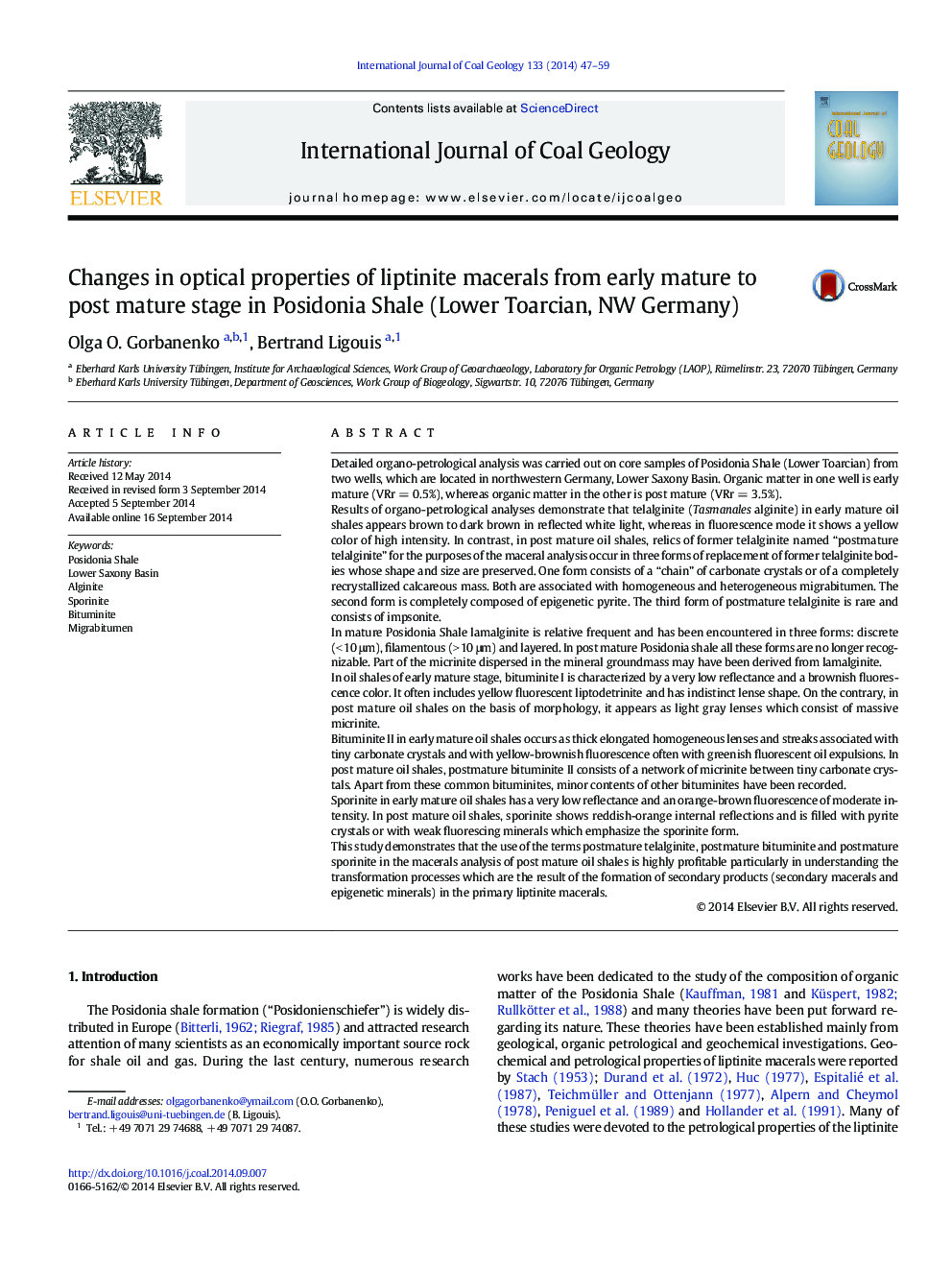| Article ID | Journal | Published Year | Pages | File Type |
|---|---|---|---|---|
| 1753163 | International Journal of Coal Geology | 2014 | 13 Pages |
•Disappearence of primary macerals and appearance of secondary macerals in postmature Posidonia Shale.•Genetic relationships between primary liptinite macerals in mature oil shale and their replacements in postmature oil shales.•Modifications of size and morphology of liptinite macerals in postmature Posidonia Shale.•Characterization of the organic-mineral fabric in postmature oil shale.
Detailed organo-petrological analysis was carried out on core samples of Posidonia Shale (Lower Toarcian) from two wells, which are located in northwestern Germany, Lower Saxony Basin. Organic matter in one well is early mature (VRr = 0.5%), whereas organic matter in the other is post mature (VRr = 3.5%).Results of organo-petrological analyses demonstrate that telalginite (Tasmanales alginite) in early mature oil shales appears brown to dark brown in reflected white light, whereas in fluorescence mode it shows a yellow color of high intensity. In contrast, in post mature oil shales, relics of former telalginite named “postmature telalginite” for the purposes of the maceral analysis occur in three forms of replacement of former telalginite bodies whose shape and size are preserved. One form consists of a “chain” of carbonate crystals or of a completely recrystallized calcareous mass. Both are associated with homogeneous and heterogeneous migrabitumen. The second form is completely composed of epigenetic pyrite. The third form of postmature telalginite is rare and consists of impsonite.In mature Posidonia Shale lamalginite is relative frequent and has been encountered in three forms: discrete (< 10 μm), filamentous (> 10 μm) and layered. In post mature Posidonia shale all these forms are no longer recognizable. Part of the micrinite dispersed in the mineral groundmass may have been derived from lamalginite.In oil shales of early mature stage, bituminite I is characterized by a very low reflectance and a brownish fluorescence color. It often includes yellow fluorescent liptodetrinite and has indistinct lense shape. On the contrary, in post mature oil shales on the basis of morphology, it appears as light gray lenses which consist of massive micrinite.Bituminite II in early mature oil shales occurs as thick elongated homogeneous lenses and streaks associated with tiny carbonate crystals and with yellow-brownish fluorescence often with greenish fluorescent oil expulsions. In post mature oil shales, postmature bituminite II consists of a network of micrinite between tiny carbonate crystals. Apart from these common bituminites, minor contents of other bituminites have been recorded.Sporinite in early mature oil shales has a very low reflectance and an orange-brown fluorescence of moderate intensity. In post mature oil shales, sporinite shows reddish-orange internal reflections and is filled with pyrite crystals or with weak fluorescing minerals which emphasize the sporinite form.This study demonstrates that the use of the terms postmature telalginite, postmature bituminite and postmature sporinite in the macerals analysis of post mature oil shales is highly profitable particularly in understanding the transformation processes which are the result of the formation of secondary products (secondary macerals and epigenetic minerals) in the primary liptinite macerals.
